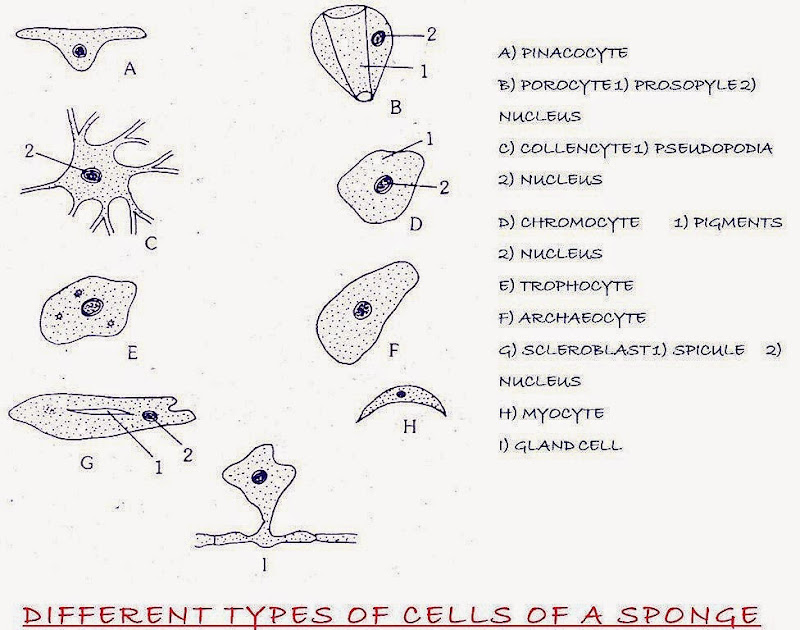Different compositions of cells in sycon are mentioned below:
Sycon is diploblastic, (two germ layer present) the outer cellular layer is pinacoderm and inner cellular layer is choanoderm with an intermediate mesenchyme. Both the layers and mesenchyme have different composition of cells:
1. Pinnacoderm:
ADVERTISEMENTS:
We can divide pinacoderm into two types
(i) Exopinacoderm or dermal epithelium makes the cover of entire body surface except dermal ostia and osculum.
(ii) Endopinacoderm makes the epithelial lining of incurrent canals and spongocoel. Pinacoderm is composed of large, flattened, polygonal cells, the pinacocytes (Gr., pinako; plank + kytos, cell).
ADVERTISEMENTS:
They have nucleus bulging out, and are highly contractile. They modify themselves according-to the place, where they are situated in size, shape and function.
The lining of incurrent canal is made up of modified pinacocyte, the tubular porocytes. These porocytes contain intracellular channel called prosopyle to connect incurrent canal to the radial canals.
Porocytes are thin walled cells, open at both ends, with the nucleus present in the peripheral cytoplasm.
Pinacocytes surrounding the osculum, outer (dermal) ostia and inner ostia (apopyles) are elongated and contractile and act as muscle cells, called myocytes. These cells form sphincters around them to regulate their openings.
ADVERTISEMENTS:
2. Choanoderm:
Choanoderm which makes the lining of radial canals is composed of flagellated collar cells or choanocytes. (Gr., choane, funnel + kytos, cell).
Each cell contains single nucleus and all the cell organells. A single basal granule which gives rise to long whip like flagellum is also found. It is surrounded at its base by a thin cytoplasmic collar.
3. Mesenchyme:
Mesenchyme is supposed to be derived from pinacoderm and contains a variety of amoeba like cells, the amoebocytes. A few of amoebocytes are as follows : Archaeocytes :
These are undifferentiated embryonic amoebocytes, having blunt pseudopodia and large nucleus with nucleolus.
They are totipotent cells as they can give rise to any other kind of cells within an animal. They also give rise to sperms and ova and play an important role in regeneration.
(a) Collencytes:
Most of the amoebocytes have branched pseudopodia that unite into a syncytial network. These are called collencytes.
(b) Chromocytes:
These are pigmented amoebocytes with lobose pseudopodia.
(c) Therocytes:
These serve as storage cells and are filled with food reserves.
(d) Myocytes:
These are fusiform contractile muscle cells present around ostia, oscula, and other openings. These form a sphincter which regulates the size of these openings.
(e) Scleroblasts:
These are modified cells to produce spicules and fibers.
(f) Gland cells:
These are attached to the body surface by long strands and secrete slime.

